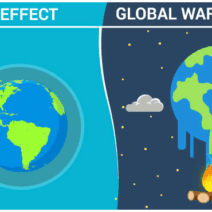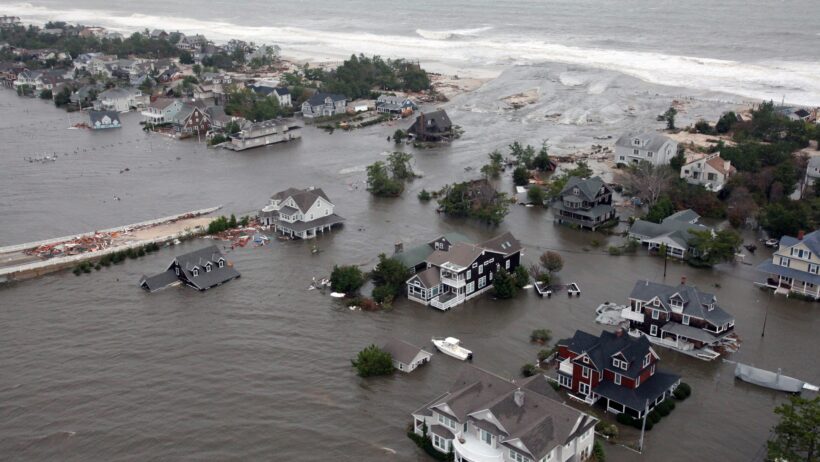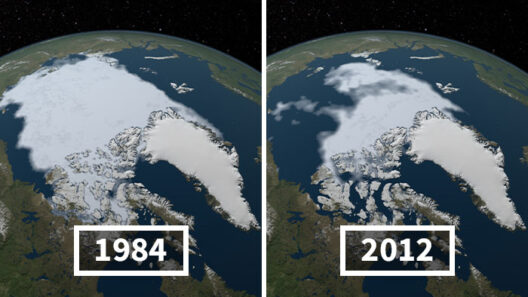Rising sea levels, a consequence of global warming, present an escalating threat to coastal communities across the globe. As glaciers and polar ice sheets melt and as ocean water expands due to increased temperatures, coastal areas face an imminent dilemma. This phenomenon is not merely a future concern; it is an ongoing reality impacting thousands of communities, displacing populations and necessitating urgent action. In this discourse, we will delve into the multifaceted implications of rising sea levels, examining economic, environmental, and social dimensions.
One of the most pressing concerns related to rising sea levels is the imminent loss of property and infrastructure. Coastal homes, businesses, and essential services situated near shorelines are at significant risk. By 2050, it is projected that approximately 300,000 coastal homes in the United States may be rendered uninhabitable due to flooding, storm surges, and erosion. This loss extends beyond personal property; vital infrastructures such as roads, hospitals, and schools are also jeopardized. The economic implications are staggering, with estimates indicating that billions of dollars may be lost in property values alone. As communities grapple with these changes, the potential for increased taxes and a heavier financial burden on governments looms large.
Another critical dimension of rising sea levels is the effect on the ecosystem. Coastal regions are home to diverse flora and fauna, many of which are endemic to their environments. Rising waters lead to saltwater intrusion, inundating freshwater systems and threatening the delicate balance of coastal habitats. Aquatic life, including essential fisheries, faces dire consequences as their breeding and feeding grounds are compromised. Wetlands, which serve as natural buffers against storm surges, are also increasingly at risk. Their disappearance exacerbates coastal vulnerability, leading to greater impacts from extreme weather events.
The impact on human health must not be overlooked. As sea levels rise, populations in coastal areas may face deteriorating living conditions. Increased flooding can lead to water contamination, heightening the risk of disease transmission and creating public health crises. Furthermore, the psychological toll of displacement and uncertainty can exacerbate mental health issues among affected populations. The importance of mental well-being during such transitions cannot be understated; communities must prepare to address both physical and emotional needs as they adapt to new realities.
Adaptation strategies are paramount in combating the threats posed by rising sea levels. Coastal communities are increasingly leaning towards sustainable development practices to mitigate the effects. This includes constructing resilient infrastructure designed to withstand flooding and extreme weather events, implementing effective flood management systems, and restoring natural ecosystems that act as buffers. Elevating buildings, using permeable materials for road construction, and creating green spaces are examples of proactive measures that can enhance resilience.
Moreover, the role of community engagement in developing adaptive strategies is crucial. Vulnerable populations should be actively involved in planning and decision-making processes. Inclusive dialogue can foster innovative solutions while ensuring that the voices of those most affected are heard. Additionally, public awareness campaigns can empower residents to take the initiative in protecting their homes and environments.
The interplay between climate policies and rising sea levels is another crucial aspect to consider. Governments must adopt rigorous climate action plans incorporating mitigation and adaptation strategies. Investing in renewable energy sources reduces greenhouse gas emissions, addressing the root cause of global warming. Furthermore, financial mechanisms, such as insurance schemes and relocation assistance, are essential for supporting communities vulnerable to flooding and displacement. Policymakers need to recognize that proactive measures will save money in the long run, preventing costly repairs and loss of life.
International collaboration is also indispensable in effectively addressing the crisis of rising sea levels. Climate change is a global issue transcending national borders, and it necessitates a unified approach. Agreements, such as the Paris Accord, aim to limit global warming and promote sustainability through shared goals and responsibilities. Countries that are most affected by rising sea levels, often those with fewer resources, require international support to build resilience and implement effective adaptations.
Displacement due to rising sea levels raises ethical questions regarding climate justice. Many of the communities facing the greatest risk are those least responsible for greenhouse gas emissions. Addressing climate change should involve a commitment to equity and justice, ensuring that resources are allocated in a manner that prioritizes the needs of vulnerable populations. Climate migrants, forced to leave their homes due to rising waters, deserve recognition and support in their plight.
In conclusion, the multifarious threats posed by rising sea levels necessitate immediate and concerted action. While the stakes are high, the potential for innovative solutions, community engagement, and effective policies presents a path forward. By addressing the economic, environmental, and social dimensions of this crisis, coastal communities can navigate the challenges that lie ahead. The crucial dialogue surrounding this issue must continue, emphasizing the importance of proactive measures and collaborative efforts to safeguard our planet and its diverse inhabitants. As we face the reality of climate change, it is imperative to act now, ensuring a sustainable future for generations to come.








